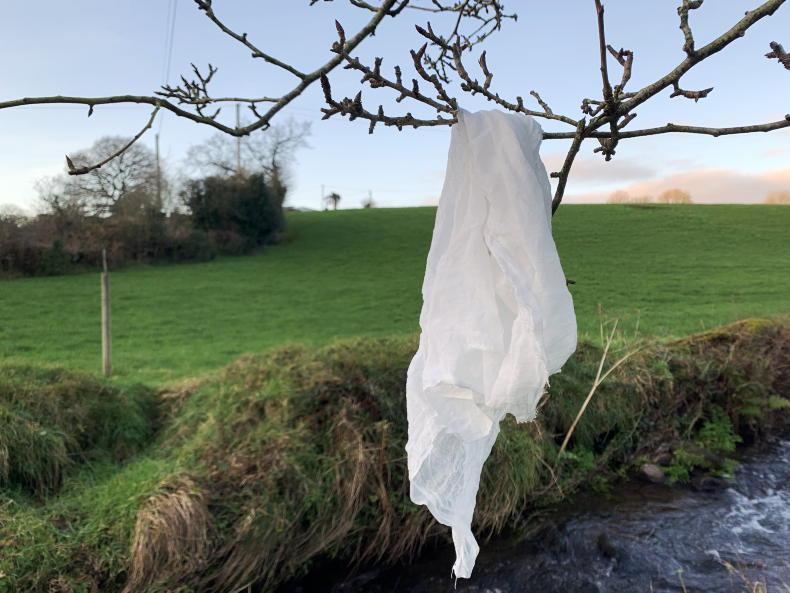I want to promote two lesser-known but great folk traditions that you can undertake next week, which will set us all up for the forthcoming year!
Next Monday is the eve of 1 February, St Brigid’s Day.
On this night, it was traditional to take a piece of cloth or a ribbon and to hang them on a bush outside the house overnight. The materials were thought to be blessed by the “Blessed Bridie”, as she was known, while she wandered the countryside and the following day the cloth or ribbon – the Brat Bríde and Ribín Bríd respectively – now bestowed magical properties imparting health and wellbeing to the family.
Brigid’s ribbon was usually carefully measured before it was placed outside and the high humidity of the evening air and the morning dew caused the ribbon to lengthen, the extent of which was taken as a sure sign of forthcoming prosperity and good fortune.
In times gone by, the little piece of cloth, the Brat Bríde, had a very wide variety of applications: everything from easing the creaking of old bones and rheumatic pains to helping reluctant ewes to accept their newborn lambs
The ribbon would wind up into a tight curl and come into play when needed, particularly when someone had a headache, when it was then unfurled and carefully placed around the head to enact a certain cure.
In times gone by, the little piece of cloth, the Brat Bríde, had a very wide variety of applications: everything from easing the creaking of old bones and rheumatic pains to helping reluctant ewes to accept their newborn lambs.
Little pieces of the cloth, sown into petticoats, were thought to protect the virginity of young girls, while the brat was much sought after when women were in labour, its presence considered crucial to a safe birth.
New life
Brigid’s Day, 1 February, and its ancient pre-Christian manifestation Imbolc is all about birth and new life. The term Imbolc or Imbolg contains the component bolg (bag), literally signifying the paunch or swollen midriff of pregnancy. Another name for the festival, Óimelc, incorporates melc (milk), the motherly nourishment on which the new-born is fed.
In Vitae Sanctae Brigitae (The Life of St Brigid), written in 650 by the cleric, Cogitosus, in Co Kildare, we observe that Brigid’s own birth was auspicious. Brigid’s mother, Broicsech, was a female slave who, on 1 February, having milked the cows at sunrise, fell at the threshold of the cow-byre and gave birth to the young saint.
Ever since, we associate Brigid with the threshold and indeed when Brigid’s crosses are made, they are always placed above the doorway.
Brigid’s Bed
Another associated Brigid’s Eve custom was to make a small bed of rushes or straw in the corner of the kitchen lest Brigid might like to stop in and rest.
This Leaba Bríd (Brigid’s Bed) was directly linked with older birthing practices, when women would give birth, not in a bed, but in a kneeling or standing position onto a bed of soft straw. This practice is borne out by such old Irish expressions as “Ón oiche a tháinig mé ar an tsop” (since the night I landed on the straw) meaning “since the night I was born”.
Such was the popularity of these cauls amongst the merchant and navy seamen in England, midwives would advertise their sale in the local newspapers, selling them for a high price
In the past, on rare occasions, some babies were born with a “caul” (literally a part of the amniotic sac) covering their heads and on occasion this membrane was collected as a charm against drowning.
Such was the popularity of these cauls amongst the merchant and navy seamen in England, midwives would advertise their sale in the local newspapers, selling them for a high price.
In Ireland, other than the caul, the Brat Bríde was considered the most effective protection against drowning and was very popular amongst fishermen.
So this Monday night, why not take the opportunity to place a little piece of cloth or a ribbon, or both, outside and remember the long-lived traditions of our forebears? After all, we need all the help we can get, and any portent of good fortune will be very welcome for the year ahead.
